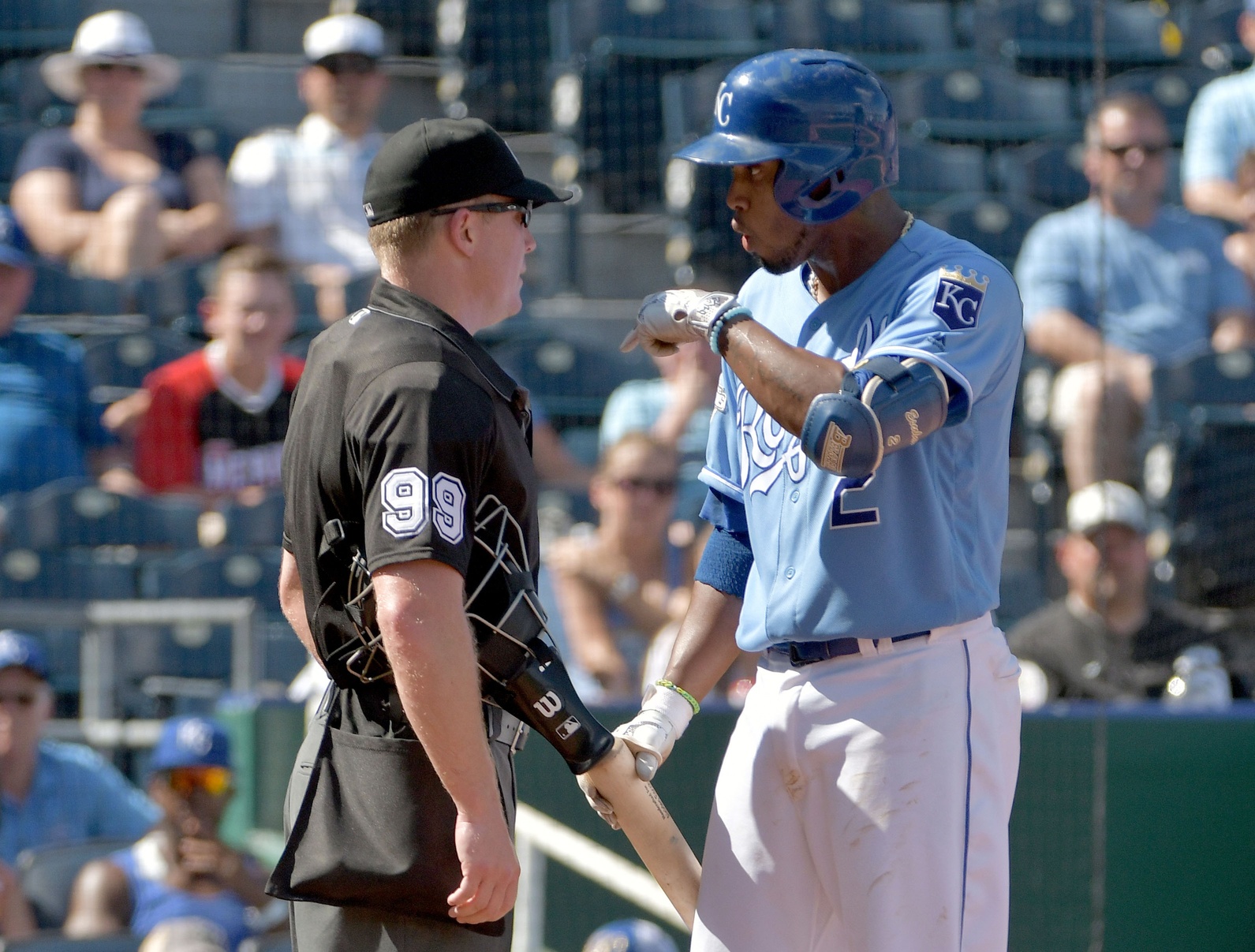This is odd. The World Series ended five days ago and Dayton Moore has yet to fire his first salvo of the offseason. By now, isn’t he supposed to have traded for some low-OBP deplorable?
Instead, the Royals have spent the time since the close of 2016 to take care of some housekeeping. Let’s take a look at each move and see what it means in the frame of the larger picture.
First, they picked up their options on closer Wade Davis and shortstop Alcides Escobar. There was never any doubt. Escobar will make $6.5 million next year while Davis pockets $10 million.
I understand some of the angst surrounding the Escobar option. Really, I do. Escobar magic and #PeakEsky aside, he’s simply not a good shortstop. Defensively, he looks like he’s lost a step (or if you’re into accuracy, at least a step and a half) and really just didn’t impress with the glove. Offensively…woof. Add it all up and you have a player who was worth 0.7 BWARP which is our value for Wins Above Replacement. That ranks 20th out of 21 qualified shortstops. Wait. It gets worse. The shortstop in 21st place, Alexei Ramirez, finished with 506 plate appearances. In other words, had Ramirez not made a start at short for the Rays in game 162, Escobar gets the “crown” of worst everyday shortstop as ranked by BWARP.
However, a move like this doesn’t exist in a vacuum. The market surely would value Escobar at his $6.5 million, and probably more. And were he a free agent, I imagine he would field at least one offer for multiple years of service. While it may not feel like it, the $6.5 million due Escobar is a fair rate for the Royals. Of course, every year his contract has increased means it becomes less likely he provides the Royals with surplus value. Such are baseball economics.
Another factor to consider is the Royals do not have an in-house option to cover the position for an entire season. Raul Mondesi is still the heir apparent, but if you watched him hit last summer, he’s in worse shape at the plate than Escobar. What the Royals need to do now is limit Escobar’s exposure to the plate. That means they need to stop hitting him leadoff and buying into the canard that is Escobar Magic. Like billy goat curses, it doesn’t exist.
The next option that was exercised was for Davis. The only thing that would have prevented the Royals from doing this would have been a catastrophic arm injury. Now the Royals hold an exceptional reliever at a cost that is below market value for such a pitcher. And, as you saw in the postseason, the usage of such pitchers and therefore their value is on the uptick.
This is good news for the Royals. They have some leverage heading into the meeting season. It feels like the Royals have always valued their bullpen a little more that other teams, so it would be a bit of a surprise if they dealt away their closer. On the other hand, they shouldn’t discount their past success in finding quality bullpen arms. They could trade Davis, get a key part for the upcoming season and probably find a suitable replacement.
The next order of business was when Kendrys Morales and Edinson Volquez both declined their portion of a mutual option. Had both sides agreed to pick up the options, Morales would have made $11 million. He gets a $1.5 million buyout. Volquez was due $10 million, but gets $3 million to move on from the Royals.
Again, these are mutual options which is just a procedural way to divert some cash while adding it to the back end of a contract. The Royals in particular use it to their benefit.
Both players create a void. Morales has been a key switch-hitting bat in the middle of the order the last two summers. Volquez struggled in 2016, but you cannot discount the contributions he made in the run to the title the year before.
The next step in the process is the qualifying offer, which the Royals can hang on both players. Let’s just say it’s highly unlikely. There’s a real danger that either (or both) would accept. Volquez’s finish means there’s absolutely zero chance the Royals offer one to him. The local media seems to think there’s a possibility that Morales gets one.
The old saw is there’s no such thing as a bad one year contract. I’d have to think there’s an exception for a one year, $17.2 million contract in a small market to a designated hitter.
There’s nothing to say the Royals can’t bring Morales back on a different contract. Rewind yourself to when Billy Butler hit free agency and the Royals were talking about rotating the designated hitter position. While it’s been something of an American League luxury for the last several years for the Royals to have a permanent DH, the amount of money the position commands makes it prudent for the Royals to explore all alternatives. If that means finding a couple of platoon bats and rotating among the regulars getting a day off in the field, so be it.
Finally, the Royals declined their part of the mutual option on Luke Hochevar for $7 million. He will receive a $500k buyout instead. Hochevar had picked up his portion of the option, which means he doesn’t think he can earn more on the open market, and after his health issues of last summer, he’s probably right. He had surgery for thoracic outlet syndrome in August, and with an expected recovery time of six months, he will be ready for spring training.
It wouldn’t be surprising to see him sign another two year (with an option) contract like the one he signed coming off of Tommy John surgery. As mentioned before, the Royals crave bullpen stability. Hochevar can provide that.
